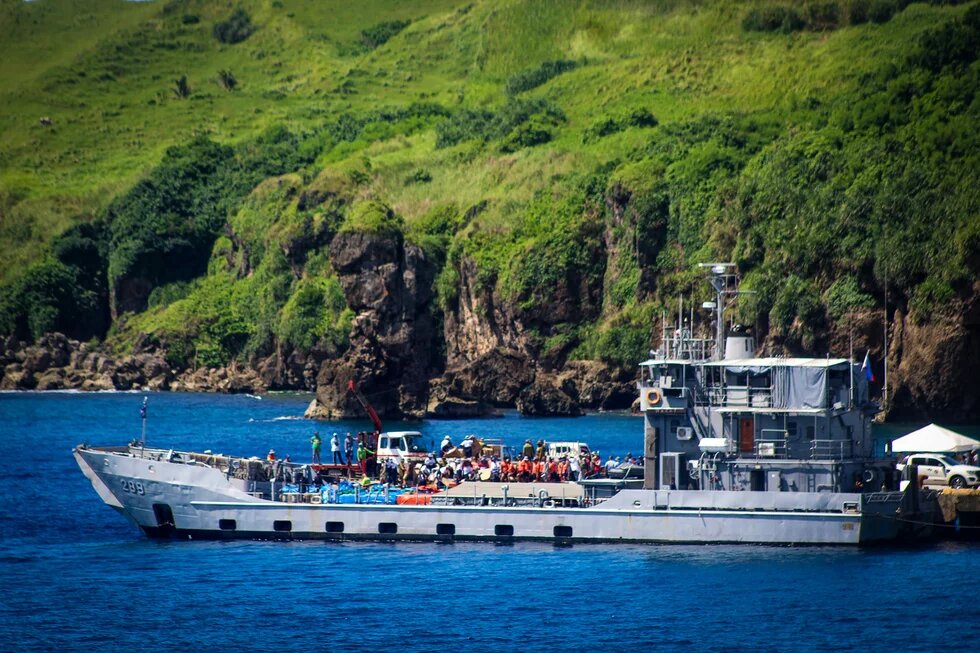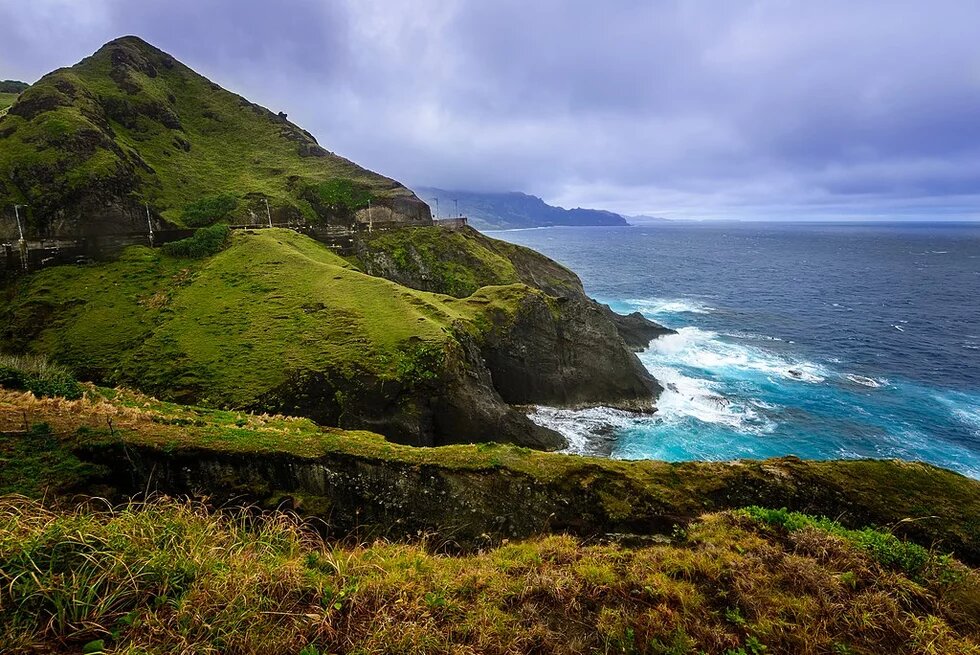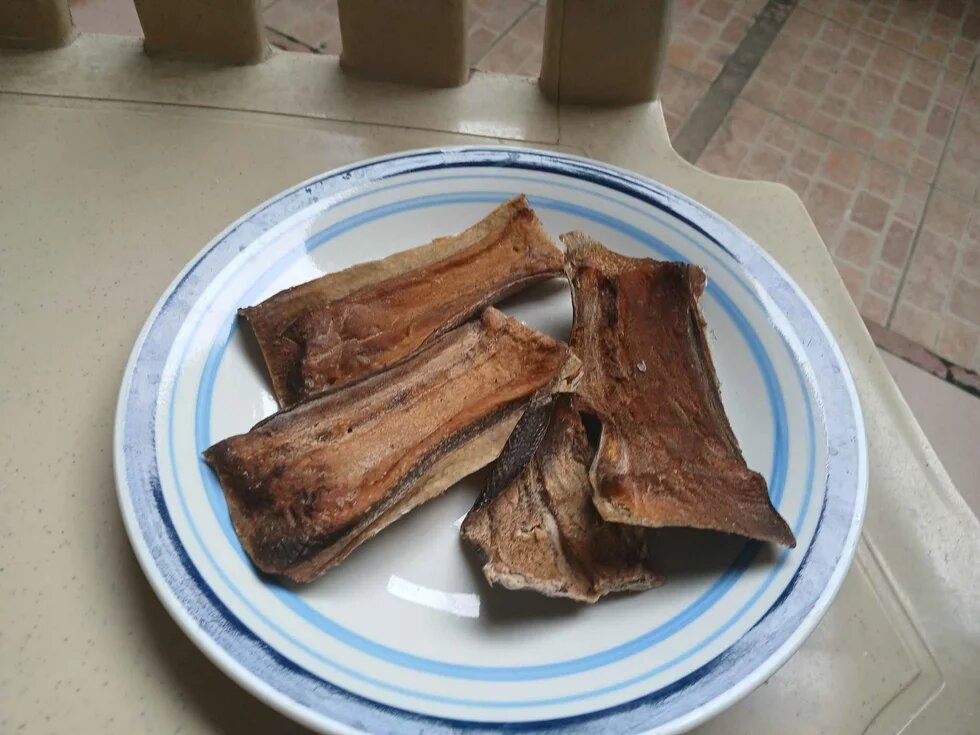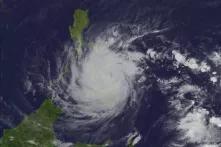
Located at the tip of the Philippines, and approximately 118 miles from Taiwan, with almost identical weather, the Ivatans of Batanes have learned to adapt their ways of life while inhabiting the most typhoon-prone islands in the country.
With its picturesque landscapes and iconic stone houses, the beauty of Batanes Islands is well-known to local and foreign tourists. However, due to its geographical location and climactic condition, more Ivatans have been migrating to other places in the Philippines since the 1950s.
Despite the climate challenges, the Ivatans’ cultural and traditional practices have strengthened the community bonds during times of celebration and adversity.

Typhoon Yagi traversed across Southeast Asia for the most part of September 2024, killing 701 individuals in five countries of ASEAN, including the Philippines. The typhoon affected millions of families and caused billions in damages and losses in infrastructures such as government buildings, schools, religious structures, and 535 road and bridge sections. Yagi certainly confirmed ASEAN’s observation that the region is “the most natural disaster-prone region in the world”. Scientists have also confirmed an upward trend in tropical cyclones making landfall in the region in the last 50 years, posing significant threats to people and properties in Southeast Asia.
Between September 30 to October 3, Batanes, the northernmost islands in the Philippines was battered by Typhoon Krathon (local name Julian). Krathon has been classified as a “supertyphoon”, with a strength of 175 km/h and gustiness of up to 215 km/h and dumped “more than two month's rain in the area for September”. The province is no stranger to deadly and strong typhoons. The mere mention of Batanes conjures images of its iconic stone houses built to withstand the severe climatic conditions that the province is known for.
There is no shortage of articles and documentation that attest to the beauty of Batanes Islands: picture ocean waves splashing against a steep stone cliffside of a mountain, topped with lush green pastures. The breathtaking sceneries of Batanes are often compared to the landscapes of Ireland and New Zealand. While these are the very images of Batanes that draw tourists to this remote area, locals often flee their hometown for places with kinder climates. Batanes is also known to be the “most typhoon-prone” place in the Philippines where it rains 8 to 21 days a month and temperatures can go as low as 7°C (Uy and Shaw, 2008) [1]. The climate in the province resembles that of Taiwan and Okinawa, and fogs can even last for days at a time. During the rainy months, the winds can be very strong and the seas rough with waves (Esteban and Valientes, 2019) [2].
In 2012, local news channel GMA-7 produced a documentary meant to showcase the beauty of the islands and featured a girl named Kathleen, who was about to graduate from high school. Kathleen told of her parents’ efforts to send her to college outside of the province and enumerated the reasons why her fellow Ivatans – the natives of Batanes, are known to leave their beautiful hometown: the hardships in earning a living, in finding work, and expensive commodities.
It is for these same reasons that this author’s ancestors left Batanes about half a century ago. She grew up hearing the stories about how they and other Ivatans were able to leave the northern province and migrated to Mindanao, southern island of the Philippines: “Marcos (Sr) sent a boat to Batanes to bring those who wanted to leave the islands”. The state-supported dispersal of Ivatans began in the 1950s under the National Resettlement and Rehabilitation Administration and brought them to the provinces of Palawan, Bukidnon and Lanao. These Ivatans settled in government homesteads (Hooker, 1972) [3] in the towns of Malinao in Western Bukidnon and Wao and Amai Manabilang in Lanao del Sur in search of better economic prospects.
The Ivatans: Adapting to Climate Change
What of those who remained in the islands? For those who chose to stay in the islands, amidst the frequent onslaught of typhoons, how do they survive Batanes?
There are cultural practices among the Ivatans that allows them to thrive in the islands despite the constant battering of typhoons. After all, Batanes is considered to provide important insights in disaster studies. Here are the three main features of the Ivatan culture of disaster preparedness: resilient housing, indigenous knowledge and community measures.
Resilient Housing
Resilient housing refers to dwellings that withstand multiple hazards including earthquakes, floods, hurricanes, and other disasters ensuring the safety of its inhabitants, and their assets. Definitely, the people of Batanes knows quite a lot about resilient housing. Stone houses with thatched roof is one of the iconic images that Batanes is known for. Their houses made of lime, stone, wood, and thatched cogon grass, are considered to be typhoon-resilient dwellings. Ivatan houses are recognized examples of vernacular architecture, serving as a traditional adaptation measure to severe climatic conditions (Hadlos, 2024) [4]. Older houses in the province have walls made of cobbles and mortar which can be as thick as 80 centimeters. Doors and windows in these houses are made hardwood and secured with bars, also made of hardwood.
However, not all houses in the islands are made of stone, thus, there is a distinct social practice among the Ivatans to prepare their houses for severe typhoons. Kapanpet is the practice of tying the house with thick and durable ropes to prevent it from being swept by strong winds. A tapangko is the additional layer of window shutters that Ivatans use to cover their windows during typhoons.
Indigenous Knowledge System
The way that Ivatans built their homes and prepare for severe typhoons demonstrate their deep understanding of their environment. Batanes experiences an average of eight typhoons every year between July to October. Thus, the Ivatan people developed a system of classifying typhoons and the warning signs that come with it, enabling them to recognize the onset of typhoons and make the necessary preparations. Fiisu refers to a weak typhoon while afiin is a strong one. Anthropologists, Rolando Esteban and Edwin Valientes, from the University of the Philippines provides the extensive classificatory system of the weather in Batanes, from good weather (mavid a kawan, mahteng) to bad weather (marahet a kawan).
In this author’s childhood, her relatives preferred to eat sweet potatoes (wakay) instead of rice were referred to as “real Ivatan”. It was only later that she found the reason behind this label: agriculture in Batanes prioritizes root crops since these are protected from reach of the typhoons (Blolong, 1995) [5]. During summer vacations spent with her grandparents in Batanes, luniswas often served by her grandmother. Lunis is a version of the adobo by the Ivatans, but one that can last for months without being placed in the refrigerator. The dish is prepared by sprinkling pork with salt and then “cooked until the oil is extracted from the meat. It is commonly stored in jars with the oil in it to serve as the preservative” (DILG, 2017).
Sun-dried arayu is also a popular Ivatan dish. Arayu is a non-mammalian dolphin, a migratory fish that passes by Batanes during the paypatawenseason, between March and May. The arayu catch is usually filleted and preserved through sun and air-drying, a practice called kulay. In kulay or kapangulay, sea harvests are salted and dried so that they can last during periods of bad weather.
Community measures
Despite not living in Batanes, the Ivatans in Bukidnon and Lanao still practice their culture such as during weddings. After the church wedding, the family hosts a reception called kapaychakvuvut, a community dance where everyone in the neighborhood is free to participate. In kapaychakvuvut, guests dance a version of the fandango, after which they offer cash to the couple. With the dance lasting the whole night until the early hours of the morning, the cash collected is often substantial enough for the newlyweds to start their married life.
Just as the community is involved in good times, the community is even more vital in bad times. Bandilyo or bandillo, is a community-based information dissemination, involving community leaders moving around their villages to announce that there is typhoon about to come. Recently, social media has been prominently used to announce oncoming typhoons and encourage the Ivatans to install the kapanpet and tapangko.
Yaru refers to the traditional practice of Ivatans pooling their resources to accomplish a task. It encompasses the phases of disaster response, such as when the community comes together to assist their less mobile neighbors in installing the kapanpet and tapangko. The recovery and rehabilitation phase also involves the neighbors helping each other in rebuilding their homes and restoring utility lines. Scholars have recognized the vital role of community efforts and traditions, such as bandilyo and yaru, in overcoming the frequent typhoons in Batanes. Disaster preparedness is not merely a temporary adjustment to prepare for typhoons; it can be a permanent way of life (Gaillard, 2003) [6].
Conclusion
Batanes is not merely this picturesque place frequently hit by typhoons. The Ivatans who inhabit the place are equally beautiful people. They have shown us how it can be possible to live and thrive with constancy of typhoons.
However, we must be wary of romanticizing the beauty of Batanes and the resilience of its people. The ongoing out-migration of the Ivatans to places with kinder weathers shows that, while it is possible to be live in the most typhoon-prone place, it is a harsh way of life – and people will avoid it if they can.
__
Gretchen Abuso is Assistant Professor of Sociology at Xavier University. She is currently writing her dissertation for the degree PhD in Sociology at the University of the Philippines. She welcomes correspondence at: mabuso@xu,edu.ph.
Disclaimer: This published work was prepared with the support of the Heinrich Böll Stiftung. The views and analysis contained in the work are those of the author and do not necessarily represent the views of the foundation. The author is responsible for any liability claims against copyright breaches of graphics, photograph, images, audio, and text used.
References
[1] Uy, N. and Shaw, R., 2008. Shaped by wind and typhoon: The indigenous knowledge of the Ivatans in the Batanes Islands, Philippines. Indigenous Knowledge for Disaster Risk Reduction, 59.
[2] Esteban, R.C. and Valientes, E.A., 2019. Ivatan Indigenous Knowledge, Classificatory Systems, and Risk Reduction Practices. Journal of Nature Studies, 18(1), pp.76-96.
[3] Hooker, B., 1972. Cohesion in Ivatan. Asian Studies, 10(1), pp.33-43.
[4] Hadlos, A., Opdyke, A., Hadigheh, S.A. and Gato, C., 2024. Pathways of multi-hazard post-disaster housing reconstruction among Ivatan Indigenous households. Journal of Building Engineering, 91, p.109636.
[5] Fr Raymundus Rede Blolong, S.V.D., 1996. The Ivatan Cultural Adaptation to Typhoons: A Porttrait of a Self-Reliant Community from the Indigenous Development Perspective. Agham-Tao, 8(5).
[6] Gaillard, J.C., 2003. Natural Hazards and Cultural Change Among Traditional Philippine Communities: An Alternative Framework of Analysis. Philippine sociological review, pp.163-174.





